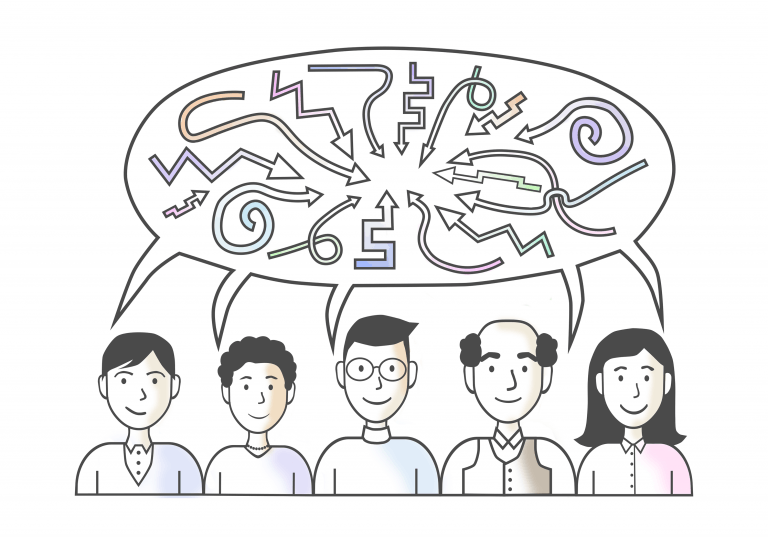This method falls under User Research and aims to capture the usage requirements and needs of users for a product that is to be developed. Therefore, it makes sense to conduct the focus group during the creative phase, at the beginning of the development process. In the Design Thinking process, this means that the focus group should take place in the “Empathize” phase, the first phase. In Usability Engineering in medical technology, the focus group falls under the area of Use Specification. In the focus group, various concepts, early prototypes, and ideas are discussed with representative users. This means that the participants are selected to reflect the actual users. When choosing, demographic characteristics, prior knowledge of using the product, and relevant social and professional backgrounds should be considered.
TIP:
„Depending on the product, new concepts can also be prototyped on the predecessor model or presented.“
The focus group is ideal for capturing the needs and feelings of users. However, it is not suitable for evaluating an interface, as group dynamics prevent the capture of an honest and heterogeneous opinion.
Preparation of Focus Groups
To achieve good group dynamics, the focus group should consist of 5 to 10 participants. Two employees are needed to conduct the focus group. One is the leader, who conducts the survey and guides the group discussion, and the other is a note-taker, who records the results. The note-taker’s goal is to capture the key points of the discussion, ideas, and concerns, and document open questions for the final discussion. Striking quotes or special situations should also be captured by the note-taker. To capture difficulties in using the product by participants or ideas and suggestions, photos should be taken during the focus group, which can be integrated into the evaluation.
The focus group must be thoroughly prepared. This includes generating the necessary prototypes or demonstration materials. Additionally, a procedure and a guideline for the topics to be discussed should be created. About two hours should be planned for the duration of the focus group. Within this time frame, the concentration and motivation of the participants can be maintained at a high level.
Procedure of a Focus Group
Typically, the focus group starts with the introduction of the focus group leader and the participants, as well as a brief introduction to the product under discussion.
Before the participants are allowed to inspect and test the product or prototypes, they are first questioned on a theoretical basis, e.g., using a questionnaire about the product. This first captures the initial overall impression, expectations, and fears of the participants before delving into specific details and aspects later in the discussion.
Only in the third step are the participants confronted with the product or prototype. The participants are asked to play through various scenarios with the product or prototype and discuss them. This step usually takes up the most time in the focus group. The leader’s task is to guide the discussion and address the ideas and opinions of the participants.
Various questioning techniques can be used for the group discussion. For example, different concepts can be presented, from which the participants choose the most suitable or prioritize them according to various aspects. Having the participants perform role plays or asking them to imagine how they would use the product in certain situations is suitable for this step.
Depending on the product, it may be useful to move to another room for this step, where the product or prototypes are set up, along with the materials needed for the group discussion.
In the final step with the participants, the focus group leader and the note-taker summarize the results and clarify the open questions noted by the note-taker. The participants are then thanked and dismissed.
Evaluation of Focus Groups
It is advisable for the focus group leader and the note-taker to sit down immediately after the focus group and reflect the results in a brief report. The notes can be used later for a detailed evaluation.
TIP:
„A video or audio recording of the focus group can be very helpful for the evaluation. However, this increases the workload, and consent from the participants must be obtained.”
In addition to the results of the group discussion, it is important for the evaluation to consider the group dynamics. Key aspects here include whether the group was dominated by one or more participants or whether some participants held back. If aspects are discussed particularly intensively or heatedly, this reflects the relevance or the polarizing nature of the aspect. A focus should be placed on these aspects in the further development process. Peculiarities, such as specific word choices or frequent repetitions of the same statement, can also be insightful.
In general, conducting several focus groups enables a more diverse and representative result.

